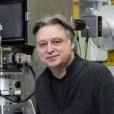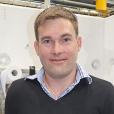
Showing 501 - 520 of 1247 results

Role at ANSTO
Dr Richard Mole is an instrument scientist co-responsible for the cold-neutron time-of-flight spectrometer PELICAN.
Understanding radiation damage at the atomic scale
International experts looking at the nuclear power technologies for the future met in Sydney
ANSTO hosted an international meeting of Expert and Policy group members for Generation IV Forum (GIF).
10th birthday of OPAL nuclear research reactor marks a decade of research
Pass the salt: can sodium power the 21st century
Atomic structure of new cathode material for sodium ion batteries helps explain long life
ANSTO provides groundwork for promising new nuclear medicine
Clarity Pharmaceuticals is building on comprehensive work on chelators carried out at ANSTO.

Role at ANSTO
Progress on understanding what makes COVID-19 more infectious than SARS
Researchers led by the University of Bristol (UK) have identified a possible cause of SARS-CoV-2’s increased infectivity compared to SARS-CoV
Technological innovation and partnership needed to make progress on mental disorders
Headed to Antarctica
Young researcher accepted into the Australian Antarctic Science Program.
Molecular scaffold
Experiments at the Synchrotron enable researchers to produce a 3D structure of a molecular scaffold with role in cancer
3D structure of a molecular scaffold determined
Melbourne researchers have used the Australian Synchrotron to produce structure of molecule known to play a critical role in the development and spread of aggressive cancer.
Australia's radioactivity measurement centre officially opened
Research reveals how disordered proteins contribute to the properties of the rabies virus
A large team of international researchers have used synchrotron techniques to understand how key proteins contribute to the virulence of the rabies virus, sometimes called the “zombie virus.”

Data sets
Your students can analyse real research data from ANSTO scientists.

Role at ANSTO
Space research enabled with new capability
New high energy ion microprobe beamline supports space research on the effects of radiation on astronauts.

Role at ANSTO
- Leader, Energy Materials Research Project

Services - Quokka
Sample environments, Data Analysis, Mail-In Services